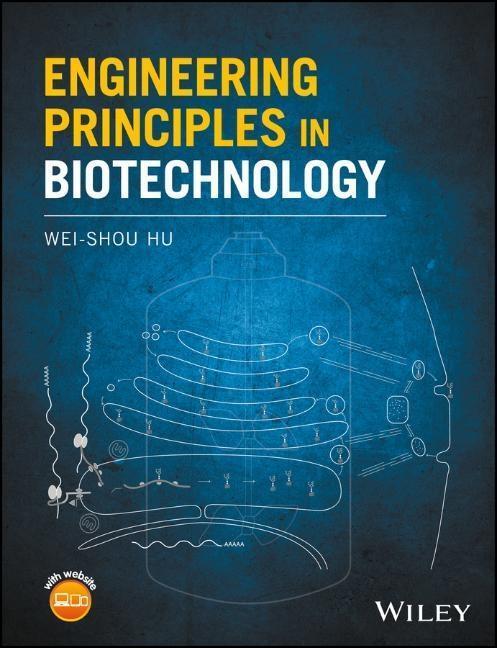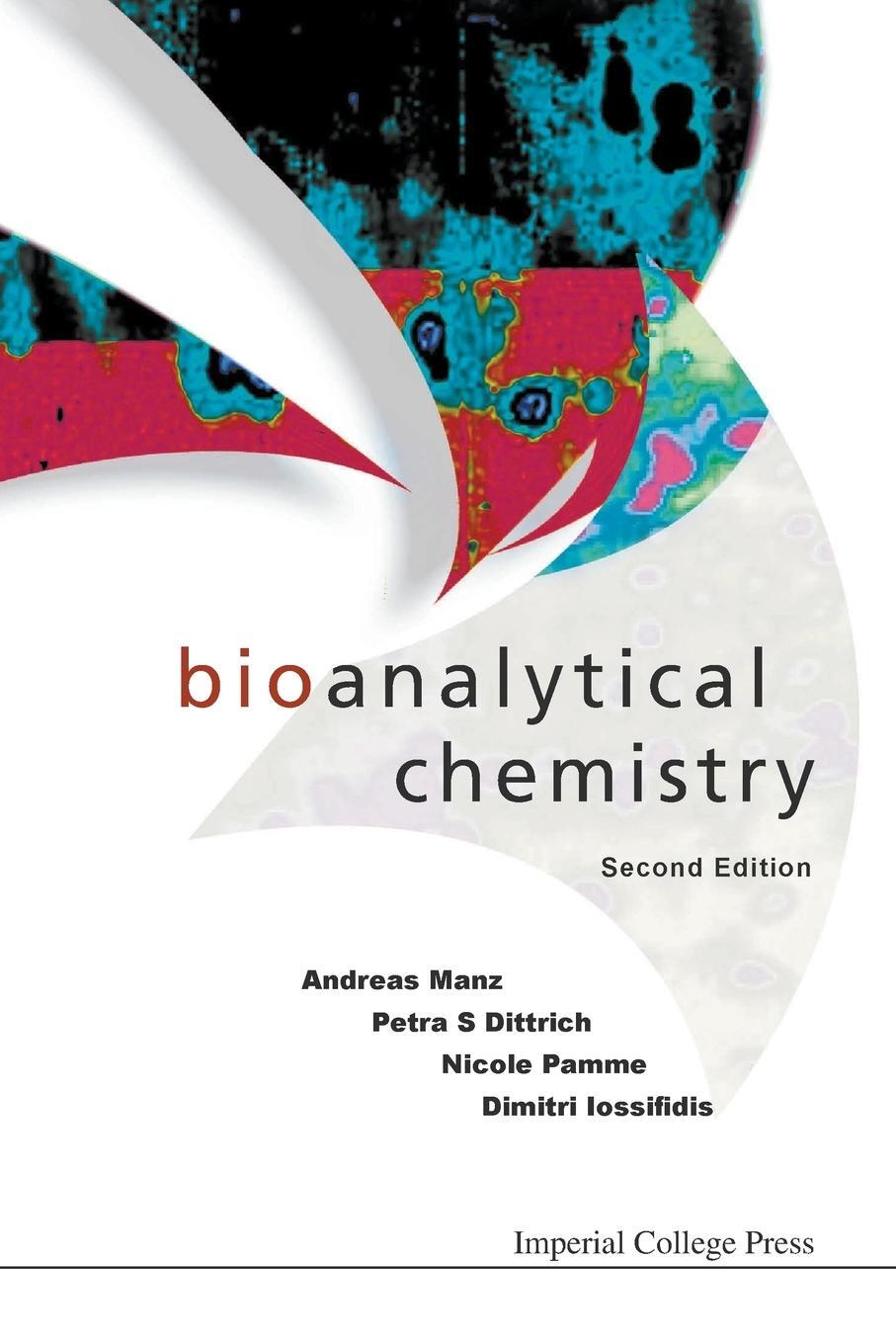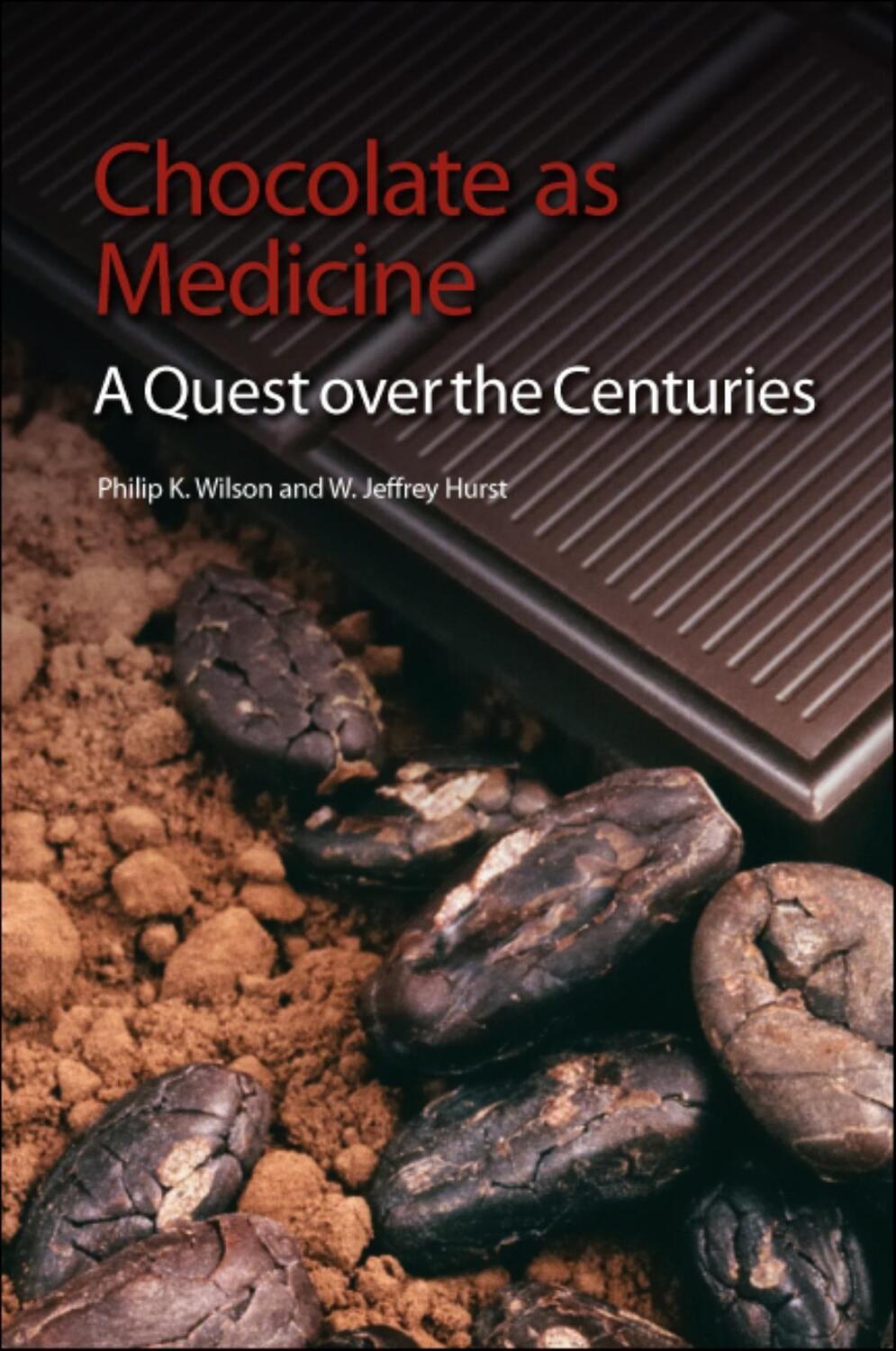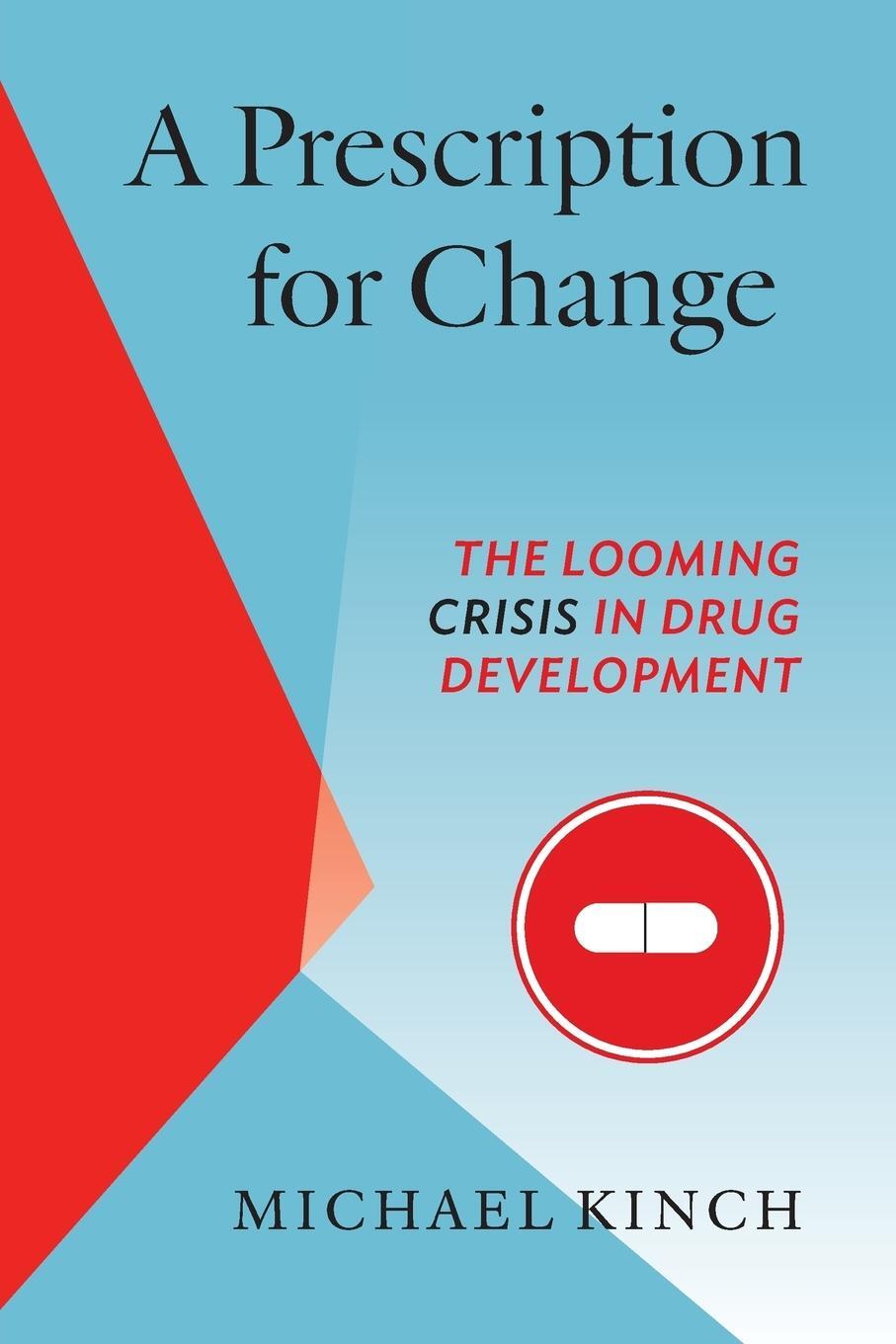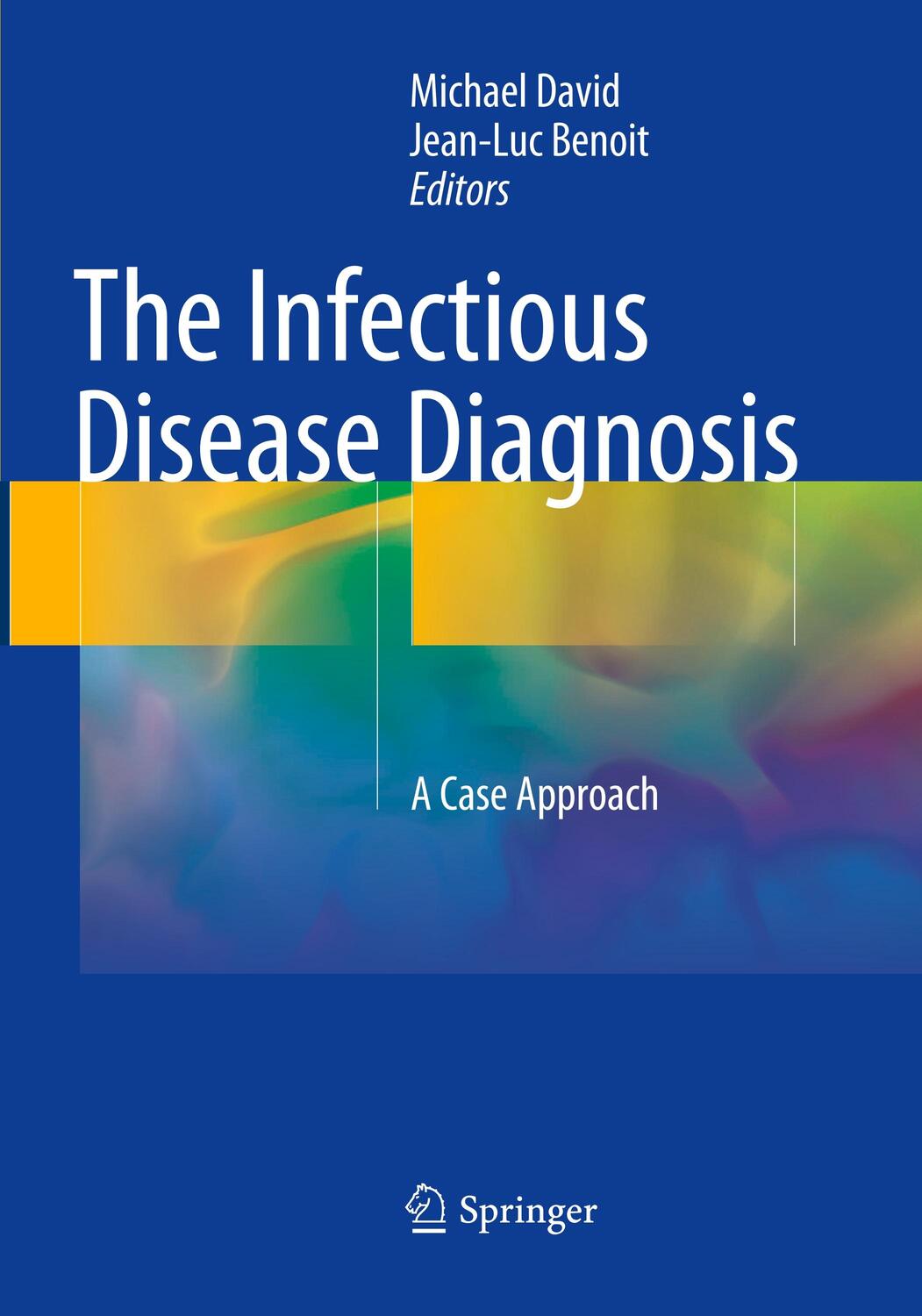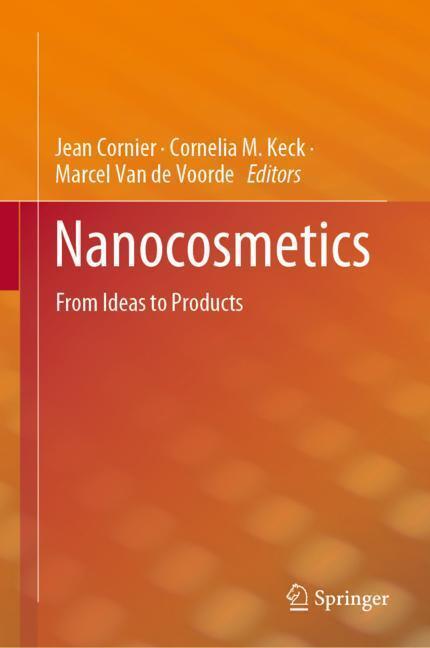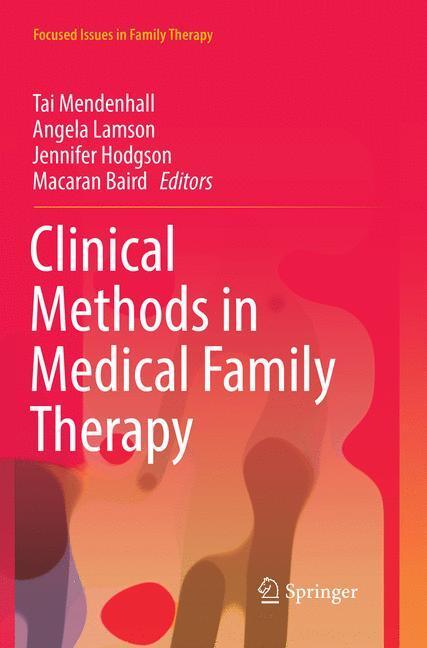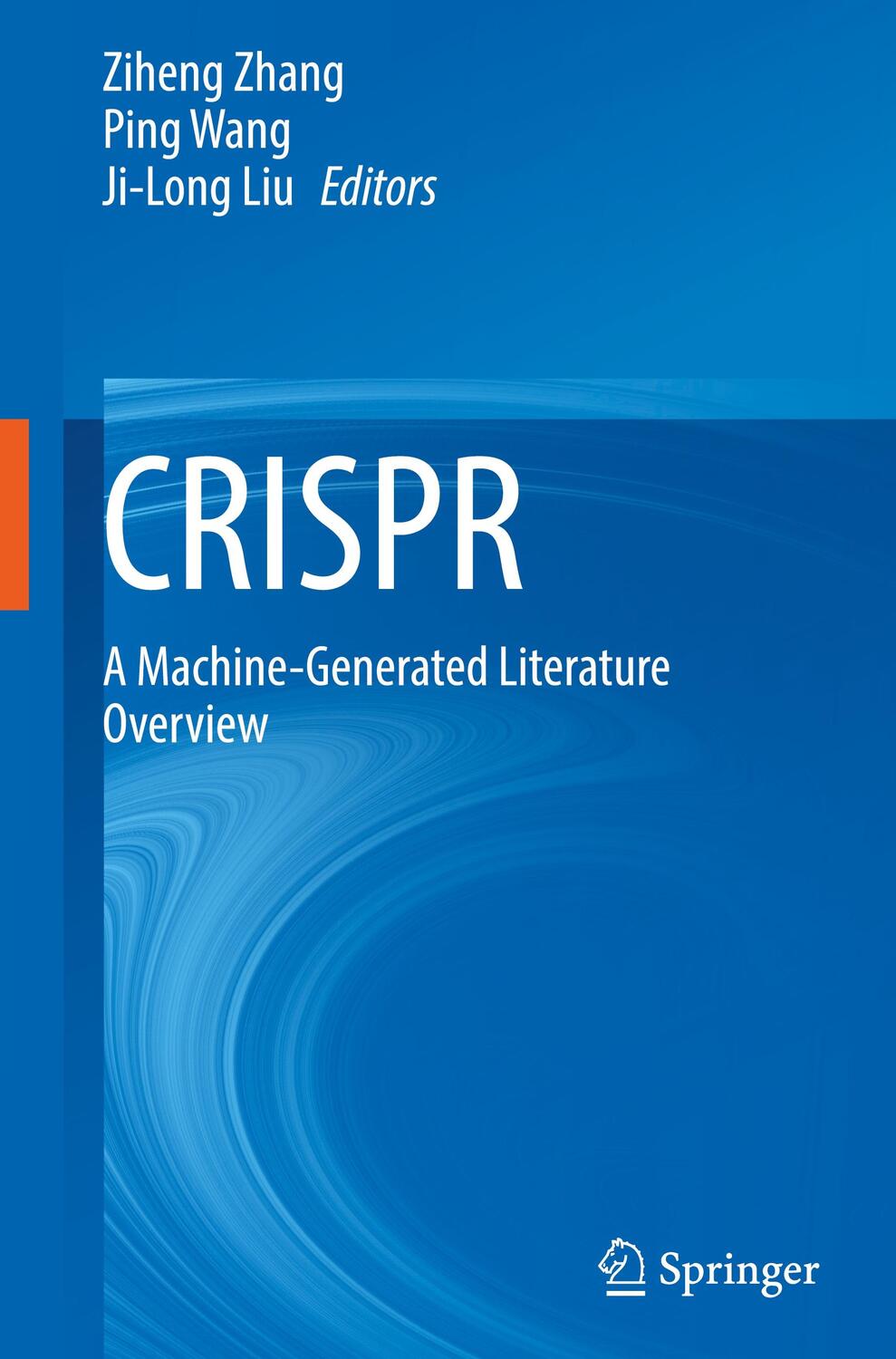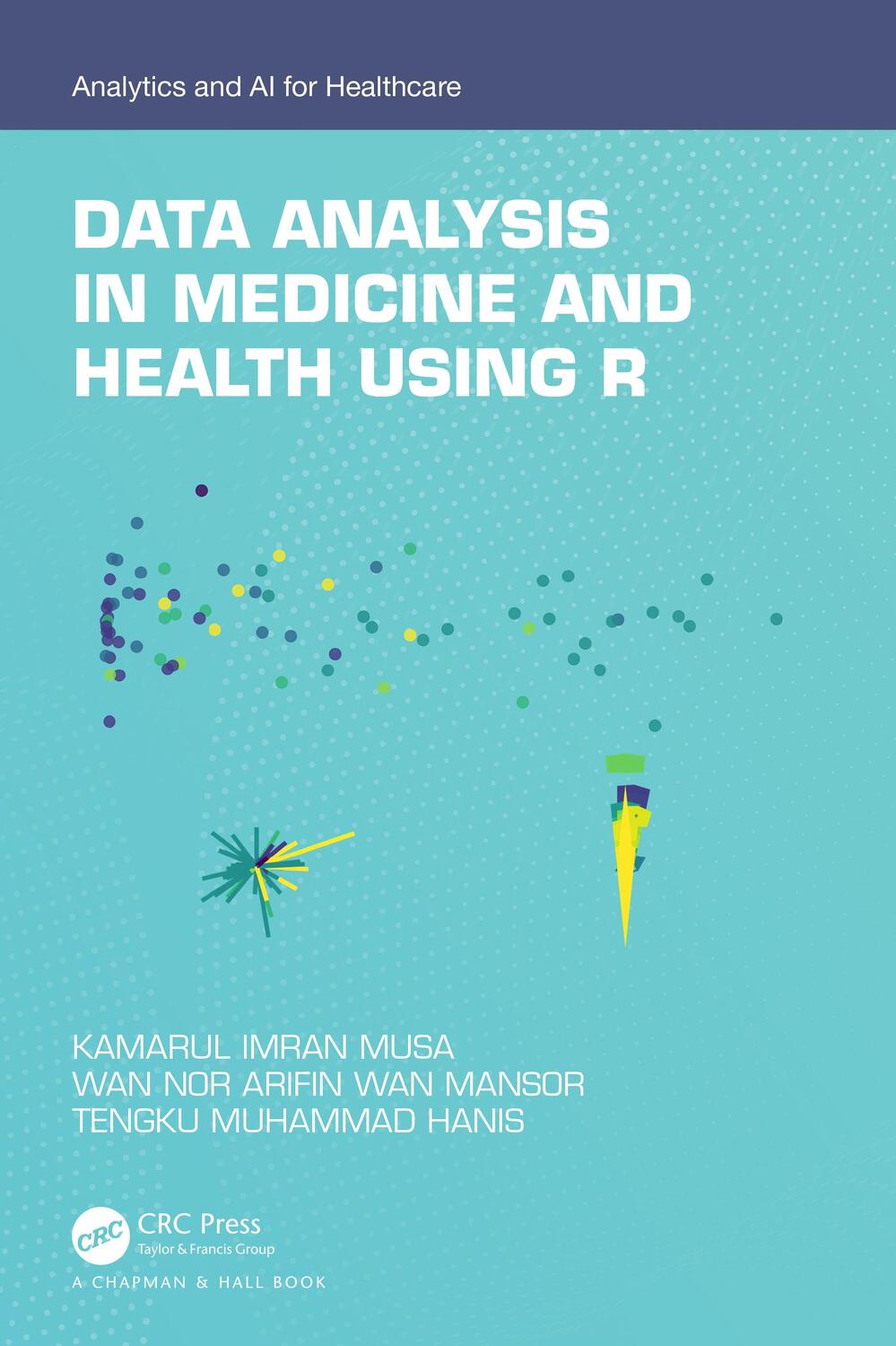Dekorationsartikel gehören nicht zum Leistungsumfang.
Sprache:
Englisch
122,50 €*
Versandkostenfrei per Post / DHL
Aktuell nicht verfügbar
Kategorien:
Beschreibung
This book is a short introduction to the engineering principles of harnessing the vast potential of microorganisms, and animal and plant cells in making biochemical products. It was written for scientists who have no background in engineering, and for engineers with minimal background in biology. The overall subject dealt with is process. But the coverage goes beyond the process of biomanufacturing in the bioreactor, and extends to the factory of cell's biosynthetic machinery.
Starting with an overview of biotechnology and organism, engineers are eased into biochemical reactions and life scientists are exposed to the technology of production using cells. Subsequent chapters allow engineers to be acquainted with biochemical pathways, while life scientist learn about stoichiometric and kinetic principles of reactions and cell growth. This leads to the coverage of reactors, oxygen transfer and scale up. Following three chapters on biomanufacturing of current and future importance, i.e. cell culture, stem cells and synthetic biology, the topic switches to product purification, first with a conceptual coverage of operations used in bioseparation, and then a more detailed analysis to provide a conceptual understanding of chromatography, the modern workhorse of bioseparation.
Drawing on principles from engineering and life sciences, this book is for practitioners in biotechnology and bioengineering. The author has used the book for a course for advanced students in both engineering and life sciences. To this end, problems are provided at the end of each chapter.
Starting with an overview of biotechnology and organism, engineers are eased into biochemical reactions and life scientists are exposed to the technology of production using cells. Subsequent chapters allow engineers to be acquainted with biochemical pathways, while life scientist learn about stoichiometric and kinetic principles of reactions and cell growth. This leads to the coverage of reactors, oxygen transfer and scale up. Following three chapters on biomanufacturing of current and future importance, i.e. cell culture, stem cells and synthetic biology, the topic switches to product purification, first with a conceptual coverage of operations used in bioseparation, and then a more detailed analysis to provide a conceptual understanding of chromatography, the modern workhorse of bioseparation.
Drawing on principles from engineering and life sciences, this book is for practitioners in biotechnology and bioengineering. The author has used the book for a course for advanced students in both engineering and life sciences. To this end, problems are provided at the end of each chapter.
This book is a short introduction to the engineering principles of harnessing the vast potential of microorganisms, and animal and plant cells in making biochemical products. It was written for scientists who have no background in engineering, and for engineers with minimal background in biology. The overall subject dealt with is process. But the coverage goes beyond the process of biomanufacturing in the bioreactor, and extends to the factory of cell's biosynthetic machinery.
Starting with an overview of biotechnology and organism, engineers are eased into biochemical reactions and life scientists are exposed to the technology of production using cells. Subsequent chapters allow engineers to be acquainted with biochemical pathways, while life scientist learn about stoichiometric and kinetic principles of reactions and cell growth. This leads to the coverage of reactors, oxygen transfer and scale up. Following three chapters on biomanufacturing of current and future importance, i.e. cell culture, stem cells and synthetic biology, the topic switches to product purification, first with a conceptual coverage of operations used in bioseparation, and then a more detailed analysis to provide a conceptual understanding of chromatography, the modern workhorse of bioseparation.
Drawing on principles from engineering and life sciences, this book is for practitioners in biotechnology and bioengineering. The author has used the book for a course for advanced students in both engineering and life sciences. To this end, problems are provided at the end of each chapter.
Starting with an overview of biotechnology and organism, engineers are eased into biochemical reactions and life scientists are exposed to the technology of production using cells. Subsequent chapters allow engineers to be acquainted with biochemical pathways, while life scientist learn about stoichiometric and kinetic principles of reactions and cell growth. This leads to the coverage of reactors, oxygen transfer and scale up. Following three chapters on biomanufacturing of current and future importance, i.e. cell culture, stem cells and synthetic biology, the topic switches to product purification, first with a conceptual coverage of operations used in bioseparation, and then a more detailed analysis to provide a conceptual understanding of chromatography, the modern workhorse of bioseparation.
Drawing on principles from engineering and life sciences, this book is for practitioners in biotechnology and bioengineering. The author has used the book for a course for advanced students in both engineering and life sciences. To this end, problems are provided at the end of each chapter.
Über den Autor
WEI-SHOU HU is Professor in the Department of Chemical Engineering and Materials Science, University of Minnesota, Minneapolis, USA.
Inhaltsverzeichnis
Preface xvii
About the CompanionWebsite xix
1 An Overview of Bioprocess Technology and Biochemical Engineering 1
1.1 A Brief History of Biotechnology and Biochemical Engineering 1
1.1.1 Classical Biotechnology 1
1.1.2 Recombinant DNA 4
1.1.3 A Typical Bioprocess 6
1.1.4 Biochemical Engineering and Bioprocess Technology 8
1.2 Industrial Organisms 10
1.2.1 Prokaryotes 12
1.2.1.1 Eubacteria and Archaea 12
1.2.2 Eukaryotic Microorganisms 12
1.2.2.1 Fungi 13
1.2.2.2 Algae 13
1.2.3 Multicellular Organisms andTheir Cells 13
1.2.3.1 Insect Cells 13
1.2.3.2 Plant Cells, Tissues, and Organs 13
1.2.3.3 Animal Cells, Tissues, and Organs 14
1.2.4 Transgenic Plants and Animals 14
1.3 Biotechnological Products 15
1.3.1 Metabolic Process 15
1.3.2 Metabolites 18
1.3.3 Cells, Tissues, and Their Components 19
1.3.3.1 Viruses 20
1.3.4 Secreted Enzymes and Other Biopolymers 20
1.3.5 Recombinant DNA Products 20
1.3.5.1 Heterologous rDNA Proteins 20
1.3.6 Metabolic Engineering and Synthetic Pathways 22
1.4 Technology Life Cycle, and Genomics- and Stem Cell-Based New Biotechnology 23
1.4.1 The Story of Penicillin and the Life Cycle of Technology 23
1.4.2 Genomics, Stem Cells, and Transformative Technologies 25
Further Reading 26
Problems 26
2 An Introduction to Industrial Microbiology and Cell Biotechnology 29
2.1 Universal Features of Cells 29
2.2 Cell Membranes, Barriers, and Transporters 30
2.3 Energy Sources for Cells 31
2.3.1 Classification of Microorganisms According toTheir Energy Source 32
2.4 Material and Informational Foundation of Living Systems 34
2.4.1 All Cells Use the Same Molecular Building Blocks 34
2.4.2 Genes 34
2.4.3 Genetic Information Processing 36
2.5 Cells of Industrial Importance 36
2.5.1 Prokaryotes 38
2.5.2 Eubacteria 38
2.5.2.1 CellWall and Cell Membrane 38
2.5.2.2 Membrane and Energy Transformation 40
2.5.2.3 Differentiation 41
2.5.3 Archaea 42
2.5.4 Eukaryotes 43
2.5.4.1 The Nucleus 44
2.5.4.2 Mitochondrion 45
2.5.4.3 Endoplasmic Reticulum and Golgi Apparatus 46
2.5.4.4 Other Organelles 47
2.5.4.5 Cytosol 48
2.6 Cells Derived from Multicellular Organisms 49
2.7 Concluding Remarks 50
Further Reading 50
Problems 50
3 Stoichiometry of Biochemical Reactions and Cell Growth 53
3.1 Stoichiometry of Biochemical Reactions 53
3.1.1 Metabolic Flux at Steady State 58
3.1.1.1 NAD/NADH Balance in Glycolysis 59
3.1.1.2 OxidativeMetabolism and NADH 60
3.1.2 Maximum Conversion of a Metabolic Product 63
3.2 Stoichiometry for Cell Growth 66
3.2.1 Cell Composition and Material Flow to Make Cell Mass 66
3.2.1.1 Composition and Chemical Formula of Cells 66
3.2.1.2 Material Flow for Biomass Formation 69
3.2.2 Stoichiometric Equation for Cell Growth 70
3.2.2.1 Yield Coefficient 71
3.3 Hypothetical Partition of a Substrate for Biomass and Product Formation 73
3.4 Metabolic Flux Analysis 74
3.4.1 Analysis of a Chemical Reaction System 74
3.4.1.1 Setting Up Material Balance Equations 74
3.4.1.2 Quasi-Steady State 76
3.4.1.3 Stoichiometric Matrix, Flux Vectors, and Solution 76
3.4.2 Analysis of Fluxes in a Bioreaction Network 77
3.4.3 Metabolic Flux Analysis on a Cellular System 81
3.4.3.1 Selecting Reactions for Analysis 81
3.4.3.2 Compartmentalization 83
3.4.3.3 Biomass 83
3.4.3.4 Limitations on Accounting of Materials 84
3.4.3.5 Solution and Analysis 84
3.5 Concluding Remarks 85
Further Reading 85
Nomenclature 86
Problems 86
4 Kinetics of Biochemical Reactions 95
4.1 Enzymes and Biochemical Reactions 95
4.2 Mechanics of Enzyme Reactions 96
4.3 Michaelis-Menten Kinetics 98
4.4 Determining the Value of Kinetic Parameters 101
4.5 Other Kinetic Expressions 104
4.6 Inhibition of Enzymatic Reactions 106
4.7 Biochemical Pathways 108
4.7.1 Kinetic Representation of a Reaction Pathway 108
4.7.2 Linearity of Fluxes in Biochemical Pathways 110
4.8 Reaction Network 114
4.9 Regulation of Reaction Rates 114
4.9.1 Flux Modulation by Km 114
4.9.2 Allosteric Regulation of Enzyme Activities 115
4.9.3 Regulation at Transcriptional and Posttranslational Levels 117
4.9.4 Modulation of Resource Distribution through Reversible Reactions 118
4.10 Transport across Membrane and Transporters 120
4.10.1 Transport across the Cell Membrane 120
4.10.2 Transport of Electrolytes 121
4.10.3 Transport of Charged Molecules across Membrane 122
4.10.4 Types of Transporters 123
4.10.5 Kinetics of a Facilitated Transporter 124
4.11 Kinetics of Binding Reactions 126
4.11.1 Binding Reactions in Biological Systems 126
4.11.2 Dissociation Constant 127
4.11.3 Saturation Kinetics 128
4.11.4 Operator Binding and Transcriptional Regulation 129
4.11.5 Kinetics of Transcription and Translation 131
4.12 Concluding Remarks 135
Further Reading 136
Nomenclature 136
Problems 138
5 Kinetics of Cell Growth Processes 145
5.1 Cell Growth and Growth Kinetics 145
5.2 Population Distribution 148
5.3 Description of Growth Rate 149
5.4 Growth Stage in a Culture 150
5.5 Quantitative Description of Growth Kinetics 151
5.5.1 Kinetic Description of Substrate Utilization 153
5.5.2 Using the Monod Model to Describe Growth in Culture 155
5.6 Optimal Growth 156
5.7 Product Formation 158
5.8 Anchorage-Dependent Vertebrate Cell Growth 159
5.9 Other Types of Growth Kinetics 161
5.10 Kinetic Characterization of Biochemical Processes 162
5.11 Applications of a Growth Model 163
5.12 The Physiological State of Cells 164
5.12.1 MultiscaleModel Linking Biotic and Abiotic Phases 166
5.13 Kinetics of Cell Death 168
5.14 Cell Death and the Sterilization of Medium 169
5.15 Concluding Remarks 171
Further Reading 172
Nomenclature 172
Problems 173
6 Kinetics of Continuous Culture 183
6.1 Introduction 183
6.2 Kinetic Description of a Continuous Culture 185
6.2.1 Balance Equations for Continuous Culture 185
6.2.2 Steady-State Behavior of a Continuous Culture 187
6.2.2.1 Monod Kinetics 187
6.2.2.2 Steady-State Concentration Profiles 187
6.2.2.3 Washout 189
6.2.3 Productivity in Continuous Culture 190
6.3 Continuous Culture with Cell Recycling 193
6.3.1 Increased Productivity with Cell Recycling 193
6.3.2 Applications of Continuous Culture with Cell Recycling 196
6.3.2.1 Low Substrate Levels in the Feed 196
6.3.2.2 Low Residual Substrate Concentration 197
6.3.2.3 Labile Product 197
6.3.2.4 Selective Enrichment of Cell Subpopulation 197
6.3.2.5 High-Intensity Mammalian Cell Culture 197
6.4 Specialty Continuous Cultures 199
6.4.1 Multiple-Stage Continuous Culture 199
6.4.2 Immobilized Cell Culture System 200
6.4.3 Continuous Culture with Mixed Populations 201
6.5 Transient Response of a Continuous Culture 202
6.5.1 Pulse Increase at the Substrate Level 203
6.5.2 Step Change in Feed Concentration 204
6.6 Concluding Remarks 205
Further Reading 205
Nomenclature 205
Problems 206
7 Bioreactor Kinetics 217
7.1 Bioreactors 217
7.2 Basic Types of Bioreactors 218
7.2.1 Flow Characteristics in Idealized Stirred-Tank (Well-Mixed) and Tubular (Plug Flow) Reactors 219
7.2.2 Reaction in an Idealized CSTR 220
7.2.3 Reaction in an Idealized PFR 222
7.2.4 Heterogeneous and Multiphasic Bioreactors - Segregation of Holding Time 225
7.3 Comparison of CSTR and PFR 225
7.3.1 CSTR versus PFR in Conversion Yield and Reaction Rate 225
7.3.2 CSTR versus PFR in Terms of Nutrient Depletion and Scale-Up 226
7.3.3 CSTR versus PFR - A Perspective from Residence Time Distribution 227
7.4 Operating Mode of Bioreactors 229
7.4.1 Batch Cultures 229
7.4.2 Fed-Batch Cultures 229
7.4.2.1 Intermittent Harvest 229
7.4.2.2 Fed-Batch 230
7.5 Configuration of Bioreactors 231
7.5.1 Simple Stirred-Tank Bioreactor 231
7.5.2 Airlift Bioreactor 233
7.5.3 Hollow-Fiber Bioreactor 233
7.6 Other Bioreactor Applications 233
7.7 Cellular Processes through the Prism of Bioreactor Analysis 235
7.8 Concluding Remarks 236
Further Reading 236
Nomenclature 237
Problems 237
8 Oxygen Transfer in Bioreactors 241
8.1 Introduction 241
8.2 Oxygen Supply to Biological Systems 242
8.3 Oxygen and Carbon Dioxide Concentration in Medium - Henry's Law 243
8.4 Oxygen Transfer through the Gas-Liquid Interface 244
8.4.1 A Film Model for Transfer across the Interface 244
8.4.2 Concentration Driving Force for Interfacial Transfer 245
8.4.3 Mass Transfer Coefficient and Interfacial Area 246
8.5 Oxygen Transfer in Bioreactors 248
8.5.1 Material Balance on Oxygen in a Bioreactor 249
8.5.2 Oxygen Transfer in a Stirred Tank 251
8.6 ExperimentalMeasurement of KLa and OUR 253
8.6.1 Determination of KLa in a Stirred-Tank Bioreactor 253
8.6.2 Measurement of OUR and qO2 254
8.7 Oxygen Transfer in Cell Immobilization Reactors 256
8.8 Concluding Remarks 256
Further Reading 256
Nomenclature 256
Problems 258
9 Scale-Up of Bioreactors and Bioprocesses 265
9.1 Introduction 265
9.2 General Considerations in Scale Translation 266
9.2.1 Process and Equipment Parameters Affected by Scale-Up 266
9.2.2 Scale Translation for Product Development and Process Troubleshooting 266
9.2.3 How Scale-Up Affects Process Variables, Equipment, and Cellular Physiology 267
9.2.4 Scale-Up of Equipment and Geometrical Similarity 267
9.3 Mechanical Agitation 268
9.4 Power Consumption and Mixing Characteristics 269
9.4.1 Power Consumption of Agitated Bioreactors 269
9.4.2 Other Dimensionless Numbers 272
9.4.3 Correlation of Oxygen Transfer Coefficient 273
9.5 Effect of Scale on Physical Behavior of Bioreactors 273
9.6 Mixing Time 276
9.6.1 Nutrient Enrichment Zone: Mixing Time versus Starvation Time 276
9.6.2 Mixing Time 277
9.6.3 Mixing Time Distribution 278
9.7 Scaling Up and Oxygen Transfer 279
9.7.1 Material Balance on Oxygen in Bioreactor 279
9.7.1.1 Aeration Rate and the Oxygen Transfer Driving Force 280
9.8 Other Process Parameters and Cell Physiology 281
9.9 Concluding Remarks 282
Further Reading 283
Nomenclature 283
Problems 284
10 Cell Culture Bioprocesses and Biomanufacturing 289
10.1...
About the CompanionWebsite xix
1 An Overview of Bioprocess Technology and Biochemical Engineering 1
1.1 A Brief History of Biotechnology and Biochemical Engineering 1
1.1.1 Classical Biotechnology 1
1.1.2 Recombinant DNA 4
1.1.3 A Typical Bioprocess 6
1.1.4 Biochemical Engineering and Bioprocess Technology 8
1.2 Industrial Organisms 10
1.2.1 Prokaryotes 12
1.2.1.1 Eubacteria and Archaea 12
1.2.2 Eukaryotic Microorganisms 12
1.2.2.1 Fungi 13
1.2.2.2 Algae 13
1.2.3 Multicellular Organisms andTheir Cells 13
1.2.3.1 Insect Cells 13
1.2.3.2 Plant Cells, Tissues, and Organs 13
1.2.3.3 Animal Cells, Tissues, and Organs 14
1.2.4 Transgenic Plants and Animals 14
1.3 Biotechnological Products 15
1.3.1 Metabolic Process 15
1.3.2 Metabolites 18
1.3.3 Cells, Tissues, and Their Components 19
1.3.3.1 Viruses 20
1.3.4 Secreted Enzymes and Other Biopolymers 20
1.3.5 Recombinant DNA Products 20
1.3.5.1 Heterologous rDNA Proteins 20
1.3.6 Metabolic Engineering and Synthetic Pathways 22
1.4 Technology Life Cycle, and Genomics- and Stem Cell-Based New Biotechnology 23
1.4.1 The Story of Penicillin and the Life Cycle of Technology 23
1.4.2 Genomics, Stem Cells, and Transformative Technologies 25
Further Reading 26
Problems 26
2 An Introduction to Industrial Microbiology and Cell Biotechnology 29
2.1 Universal Features of Cells 29
2.2 Cell Membranes, Barriers, and Transporters 30
2.3 Energy Sources for Cells 31
2.3.1 Classification of Microorganisms According toTheir Energy Source 32
2.4 Material and Informational Foundation of Living Systems 34
2.4.1 All Cells Use the Same Molecular Building Blocks 34
2.4.2 Genes 34
2.4.3 Genetic Information Processing 36
2.5 Cells of Industrial Importance 36
2.5.1 Prokaryotes 38
2.5.2 Eubacteria 38
2.5.2.1 CellWall and Cell Membrane 38
2.5.2.2 Membrane and Energy Transformation 40
2.5.2.3 Differentiation 41
2.5.3 Archaea 42
2.5.4 Eukaryotes 43
2.5.4.1 The Nucleus 44
2.5.4.2 Mitochondrion 45
2.5.4.3 Endoplasmic Reticulum and Golgi Apparatus 46
2.5.4.4 Other Organelles 47
2.5.4.5 Cytosol 48
2.6 Cells Derived from Multicellular Organisms 49
2.7 Concluding Remarks 50
Further Reading 50
Problems 50
3 Stoichiometry of Biochemical Reactions and Cell Growth 53
3.1 Stoichiometry of Biochemical Reactions 53
3.1.1 Metabolic Flux at Steady State 58
3.1.1.1 NAD/NADH Balance in Glycolysis 59
3.1.1.2 OxidativeMetabolism and NADH 60
3.1.2 Maximum Conversion of a Metabolic Product 63
3.2 Stoichiometry for Cell Growth 66
3.2.1 Cell Composition and Material Flow to Make Cell Mass 66
3.2.1.1 Composition and Chemical Formula of Cells 66
3.2.1.2 Material Flow for Biomass Formation 69
3.2.2 Stoichiometric Equation for Cell Growth 70
3.2.2.1 Yield Coefficient 71
3.3 Hypothetical Partition of a Substrate for Biomass and Product Formation 73
3.4 Metabolic Flux Analysis 74
3.4.1 Analysis of a Chemical Reaction System 74
3.4.1.1 Setting Up Material Balance Equations 74
3.4.1.2 Quasi-Steady State 76
3.4.1.3 Stoichiometric Matrix, Flux Vectors, and Solution 76
3.4.2 Analysis of Fluxes in a Bioreaction Network 77
3.4.3 Metabolic Flux Analysis on a Cellular System 81
3.4.3.1 Selecting Reactions for Analysis 81
3.4.3.2 Compartmentalization 83
3.4.3.3 Biomass 83
3.4.3.4 Limitations on Accounting of Materials 84
3.4.3.5 Solution and Analysis 84
3.5 Concluding Remarks 85
Further Reading 85
Nomenclature 86
Problems 86
4 Kinetics of Biochemical Reactions 95
4.1 Enzymes and Biochemical Reactions 95
4.2 Mechanics of Enzyme Reactions 96
4.3 Michaelis-Menten Kinetics 98
4.4 Determining the Value of Kinetic Parameters 101
4.5 Other Kinetic Expressions 104
4.6 Inhibition of Enzymatic Reactions 106
4.7 Biochemical Pathways 108
4.7.1 Kinetic Representation of a Reaction Pathway 108
4.7.2 Linearity of Fluxes in Biochemical Pathways 110
4.8 Reaction Network 114
4.9 Regulation of Reaction Rates 114
4.9.1 Flux Modulation by Km 114
4.9.2 Allosteric Regulation of Enzyme Activities 115
4.9.3 Regulation at Transcriptional and Posttranslational Levels 117
4.9.4 Modulation of Resource Distribution through Reversible Reactions 118
4.10 Transport across Membrane and Transporters 120
4.10.1 Transport across the Cell Membrane 120
4.10.2 Transport of Electrolytes 121
4.10.3 Transport of Charged Molecules across Membrane 122
4.10.4 Types of Transporters 123
4.10.5 Kinetics of a Facilitated Transporter 124
4.11 Kinetics of Binding Reactions 126
4.11.1 Binding Reactions in Biological Systems 126
4.11.2 Dissociation Constant 127
4.11.3 Saturation Kinetics 128
4.11.4 Operator Binding and Transcriptional Regulation 129
4.11.5 Kinetics of Transcription and Translation 131
4.12 Concluding Remarks 135
Further Reading 136
Nomenclature 136
Problems 138
5 Kinetics of Cell Growth Processes 145
5.1 Cell Growth and Growth Kinetics 145
5.2 Population Distribution 148
5.3 Description of Growth Rate 149
5.4 Growth Stage in a Culture 150
5.5 Quantitative Description of Growth Kinetics 151
5.5.1 Kinetic Description of Substrate Utilization 153
5.5.2 Using the Monod Model to Describe Growth in Culture 155
5.6 Optimal Growth 156
5.7 Product Formation 158
5.8 Anchorage-Dependent Vertebrate Cell Growth 159
5.9 Other Types of Growth Kinetics 161
5.10 Kinetic Characterization of Biochemical Processes 162
5.11 Applications of a Growth Model 163
5.12 The Physiological State of Cells 164
5.12.1 MultiscaleModel Linking Biotic and Abiotic Phases 166
5.13 Kinetics of Cell Death 168
5.14 Cell Death and the Sterilization of Medium 169
5.15 Concluding Remarks 171
Further Reading 172
Nomenclature 172
Problems 173
6 Kinetics of Continuous Culture 183
6.1 Introduction 183
6.2 Kinetic Description of a Continuous Culture 185
6.2.1 Balance Equations for Continuous Culture 185
6.2.2 Steady-State Behavior of a Continuous Culture 187
6.2.2.1 Monod Kinetics 187
6.2.2.2 Steady-State Concentration Profiles 187
6.2.2.3 Washout 189
6.2.3 Productivity in Continuous Culture 190
6.3 Continuous Culture with Cell Recycling 193
6.3.1 Increased Productivity with Cell Recycling 193
6.3.2 Applications of Continuous Culture with Cell Recycling 196
6.3.2.1 Low Substrate Levels in the Feed 196
6.3.2.2 Low Residual Substrate Concentration 197
6.3.2.3 Labile Product 197
6.3.2.4 Selective Enrichment of Cell Subpopulation 197
6.3.2.5 High-Intensity Mammalian Cell Culture 197
6.4 Specialty Continuous Cultures 199
6.4.1 Multiple-Stage Continuous Culture 199
6.4.2 Immobilized Cell Culture System 200
6.4.3 Continuous Culture with Mixed Populations 201
6.5 Transient Response of a Continuous Culture 202
6.5.1 Pulse Increase at the Substrate Level 203
6.5.2 Step Change in Feed Concentration 204
6.6 Concluding Remarks 205
Further Reading 205
Nomenclature 205
Problems 206
7 Bioreactor Kinetics 217
7.1 Bioreactors 217
7.2 Basic Types of Bioreactors 218
7.2.1 Flow Characteristics in Idealized Stirred-Tank (Well-Mixed) and Tubular (Plug Flow) Reactors 219
7.2.2 Reaction in an Idealized CSTR 220
7.2.3 Reaction in an Idealized PFR 222
7.2.4 Heterogeneous and Multiphasic Bioreactors - Segregation of Holding Time 225
7.3 Comparison of CSTR and PFR 225
7.3.1 CSTR versus PFR in Conversion Yield and Reaction Rate 225
7.3.2 CSTR versus PFR in Terms of Nutrient Depletion and Scale-Up 226
7.3.3 CSTR versus PFR - A Perspective from Residence Time Distribution 227
7.4 Operating Mode of Bioreactors 229
7.4.1 Batch Cultures 229
7.4.2 Fed-Batch Cultures 229
7.4.2.1 Intermittent Harvest 229
7.4.2.2 Fed-Batch 230
7.5 Configuration of Bioreactors 231
7.5.1 Simple Stirred-Tank Bioreactor 231
7.5.2 Airlift Bioreactor 233
7.5.3 Hollow-Fiber Bioreactor 233
7.6 Other Bioreactor Applications 233
7.7 Cellular Processes through the Prism of Bioreactor Analysis 235
7.8 Concluding Remarks 236
Further Reading 236
Nomenclature 237
Problems 237
8 Oxygen Transfer in Bioreactors 241
8.1 Introduction 241
8.2 Oxygen Supply to Biological Systems 242
8.3 Oxygen and Carbon Dioxide Concentration in Medium - Henry's Law 243
8.4 Oxygen Transfer through the Gas-Liquid Interface 244
8.4.1 A Film Model for Transfer across the Interface 244
8.4.2 Concentration Driving Force for Interfacial Transfer 245
8.4.3 Mass Transfer Coefficient and Interfacial Area 246
8.5 Oxygen Transfer in Bioreactors 248
8.5.1 Material Balance on Oxygen in a Bioreactor 249
8.5.2 Oxygen Transfer in a Stirred Tank 251
8.6 ExperimentalMeasurement of KLa and OUR 253
8.6.1 Determination of KLa in a Stirred-Tank Bioreactor 253
8.6.2 Measurement of OUR and qO2 254
8.7 Oxygen Transfer in Cell Immobilization Reactors 256
8.8 Concluding Remarks 256
Further Reading 256
Nomenclature 256
Problems 258
9 Scale-Up of Bioreactors and Bioprocesses 265
9.1 Introduction 265
9.2 General Considerations in Scale Translation 266
9.2.1 Process and Equipment Parameters Affected by Scale-Up 266
9.2.2 Scale Translation for Product Development and Process Troubleshooting 266
9.2.3 How Scale-Up Affects Process Variables, Equipment, and Cellular Physiology 267
9.2.4 Scale-Up of Equipment and Geometrical Similarity 267
9.3 Mechanical Agitation 268
9.4 Power Consumption and Mixing Characteristics 269
9.4.1 Power Consumption of Agitated Bioreactors 269
9.4.2 Other Dimensionless Numbers 272
9.4.3 Correlation of Oxygen Transfer Coefficient 273
9.5 Effect of Scale on Physical Behavior of Bioreactors 273
9.6 Mixing Time 276
9.6.1 Nutrient Enrichment Zone: Mixing Time versus Starvation Time 276
9.6.2 Mixing Time 277
9.6.3 Mixing Time Distribution 278
9.7 Scaling Up and Oxygen Transfer 279
9.7.1 Material Balance on Oxygen in Bioreactor 279
9.7.1.1 Aeration Rate and the Oxygen Transfer Driving Force 280
9.8 Other Process Parameters and Cell Physiology 281
9.9 Concluding Remarks 282
Further Reading 283
Nomenclature 283
Problems 284
10 Cell Culture Bioprocesses and Biomanufacturing 289
10.1...
Details
| Erscheinungsjahr: | 2017 |
|---|---|
| Fachbereich: | Chemische Technik |
| Genre: | Technik |
| Rubrik: | Naturwissenschaften & Technik |
| Medium: | Buch |
| Seiten: | 504 |
| Inhalt: | 504 S. |
| ISBN-13: | 9781119159025 |
| ISBN-10: | 1119159024 |
| Sprache: | Englisch |
| Einband: | Gebunden |
| Autor: | Hu, Wei-Shou |
| Hersteller: |
Wiley
John Wiley & Sons |
| Maße: | 251 x 174 x 30 mm |
| Von/Mit: | Wei-Shou Hu |
| Erscheinungsdatum: | 13.11.2017 |
| Gewicht: | 0,902 kg |
Über den Autor
WEI-SHOU HU is Professor in the Department of Chemical Engineering and Materials Science, University of Minnesota, Minneapolis, USA.
Inhaltsverzeichnis
Preface xvii
About the CompanionWebsite xix
1 An Overview of Bioprocess Technology and Biochemical Engineering 1
1.1 A Brief History of Biotechnology and Biochemical Engineering 1
1.1.1 Classical Biotechnology 1
1.1.2 Recombinant DNA 4
1.1.3 A Typical Bioprocess 6
1.1.4 Biochemical Engineering and Bioprocess Technology 8
1.2 Industrial Organisms 10
1.2.1 Prokaryotes 12
1.2.1.1 Eubacteria and Archaea 12
1.2.2 Eukaryotic Microorganisms 12
1.2.2.1 Fungi 13
1.2.2.2 Algae 13
1.2.3 Multicellular Organisms andTheir Cells 13
1.2.3.1 Insect Cells 13
1.2.3.2 Plant Cells, Tissues, and Organs 13
1.2.3.3 Animal Cells, Tissues, and Organs 14
1.2.4 Transgenic Plants and Animals 14
1.3 Biotechnological Products 15
1.3.1 Metabolic Process 15
1.3.2 Metabolites 18
1.3.3 Cells, Tissues, and Their Components 19
1.3.3.1 Viruses 20
1.3.4 Secreted Enzymes and Other Biopolymers 20
1.3.5 Recombinant DNA Products 20
1.3.5.1 Heterologous rDNA Proteins 20
1.3.6 Metabolic Engineering and Synthetic Pathways 22
1.4 Technology Life Cycle, and Genomics- and Stem Cell-Based New Biotechnology 23
1.4.1 The Story of Penicillin and the Life Cycle of Technology 23
1.4.2 Genomics, Stem Cells, and Transformative Technologies 25
Further Reading 26
Problems 26
2 An Introduction to Industrial Microbiology and Cell Biotechnology 29
2.1 Universal Features of Cells 29
2.2 Cell Membranes, Barriers, and Transporters 30
2.3 Energy Sources for Cells 31
2.3.1 Classification of Microorganisms According toTheir Energy Source 32
2.4 Material and Informational Foundation of Living Systems 34
2.4.1 All Cells Use the Same Molecular Building Blocks 34
2.4.2 Genes 34
2.4.3 Genetic Information Processing 36
2.5 Cells of Industrial Importance 36
2.5.1 Prokaryotes 38
2.5.2 Eubacteria 38
2.5.2.1 CellWall and Cell Membrane 38
2.5.2.2 Membrane and Energy Transformation 40
2.5.2.3 Differentiation 41
2.5.3 Archaea 42
2.5.4 Eukaryotes 43
2.5.4.1 The Nucleus 44
2.5.4.2 Mitochondrion 45
2.5.4.3 Endoplasmic Reticulum and Golgi Apparatus 46
2.5.4.4 Other Organelles 47
2.5.4.5 Cytosol 48
2.6 Cells Derived from Multicellular Organisms 49
2.7 Concluding Remarks 50
Further Reading 50
Problems 50
3 Stoichiometry of Biochemical Reactions and Cell Growth 53
3.1 Stoichiometry of Biochemical Reactions 53
3.1.1 Metabolic Flux at Steady State 58
3.1.1.1 NAD/NADH Balance in Glycolysis 59
3.1.1.2 OxidativeMetabolism and NADH 60
3.1.2 Maximum Conversion of a Metabolic Product 63
3.2 Stoichiometry for Cell Growth 66
3.2.1 Cell Composition and Material Flow to Make Cell Mass 66
3.2.1.1 Composition and Chemical Formula of Cells 66
3.2.1.2 Material Flow for Biomass Formation 69
3.2.2 Stoichiometric Equation for Cell Growth 70
3.2.2.1 Yield Coefficient 71
3.3 Hypothetical Partition of a Substrate for Biomass and Product Formation 73
3.4 Metabolic Flux Analysis 74
3.4.1 Analysis of a Chemical Reaction System 74
3.4.1.1 Setting Up Material Balance Equations 74
3.4.1.2 Quasi-Steady State 76
3.4.1.3 Stoichiometric Matrix, Flux Vectors, and Solution 76
3.4.2 Analysis of Fluxes in a Bioreaction Network 77
3.4.3 Metabolic Flux Analysis on a Cellular System 81
3.4.3.1 Selecting Reactions for Analysis 81
3.4.3.2 Compartmentalization 83
3.4.3.3 Biomass 83
3.4.3.4 Limitations on Accounting of Materials 84
3.4.3.5 Solution and Analysis 84
3.5 Concluding Remarks 85
Further Reading 85
Nomenclature 86
Problems 86
4 Kinetics of Biochemical Reactions 95
4.1 Enzymes and Biochemical Reactions 95
4.2 Mechanics of Enzyme Reactions 96
4.3 Michaelis-Menten Kinetics 98
4.4 Determining the Value of Kinetic Parameters 101
4.5 Other Kinetic Expressions 104
4.6 Inhibition of Enzymatic Reactions 106
4.7 Biochemical Pathways 108
4.7.1 Kinetic Representation of a Reaction Pathway 108
4.7.2 Linearity of Fluxes in Biochemical Pathways 110
4.8 Reaction Network 114
4.9 Regulation of Reaction Rates 114
4.9.1 Flux Modulation by Km 114
4.9.2 Allosteric Regulation of Enzyme Activities 115
4.9.3 Regulation at Transcriptional and Posttranslational Levels 117
4.9.4 Modulation of Resource Distribution through Reversible Reactions 118
4.10 Transport across Membrane and Transporters 120
4.10.1 Transport across the Cell Membrane 120
4.10.2 Transport of Electrolytes 121
4.10.3 Transport of Charged Molecules across Membrane 122
4.10.4 Types of Transporters 123
4.10.5 Kinetics of a Facilitated Transporter 124
4.11 Kinetics of Binding Reactions 126
4.11.1 Binding Reactions in Biological Systems 126
4.11.2 Dissociation Constant 127
4.11.3 Saturation Kinetics 128
4.11.4 Operator Binding and Transcriptional Regulation 129
4.11.5 Kinetics of Transcription and Translation 131
4.12 Concluding Remarks 135
Further Reading 136
Nomenclature 136
Problems 138
5 Kinetics of Cell Growth Processes 145
5.1 Cell Growth and Growth Kinetics 145
5.2 Population Distribution 148
5.3 Description of Growth Rate 149
5.4 Growth Stage in a Culture 150
5.5 Quantitative Description of Growth Kinetics 151
5.5.1 Kinetic Description of Substrate Utilization 153
5.5.2 Using the Monod Model to Describe Growth in Culture 155
5.6 Optimal Growth 156
5.7 Product Formation 158
5.8 Anchorage-Dependent Vertebrate Cell Growth 159
5.9 Other Types of Growth Kinetics 161
5.10 Kinetic Characterization of Biochemical Processes 162
5.11 Applications of a Growth Model 163
5.12 The Physiological State of Cells 164
5.12.1 MultiscaleModel Linking Biotic and Abiotic Phases 166
5.13 Kinetics of Cell Death 168
5.14 Cell Death and the Sterilization of Medium 169
5.15 Concluding Remarks 171
Further Reading 172
Nomenclature 172
Problems 173
6 Kinetics of Continuous Culture 183
6.1 Introduction 183
6.2 Kinetic Description of a Continuous Culture 185
6.2.1 Balance Equations for Continuous Culture 185
6.2.2 Steady-State Behavior of a Continuous Culture 187
6.2.2.1 Monod Kinetics 187
6.2.2.2 Steady-State Concentration Profiles 187
6.2.2.3 Washout 189
6.2.3 Productivity in Continuous Culture 190
6.3 Continuous Culture with Cell Recycling 193
6.3.1 Increased Productivity with Cell Recycling 193
6.3.2 Applications of Continuous Culture with Cell Recycling 196
6.3.2.1 Low Substrate Levels in the Feed 196
6.3.2.2 Low Residual Substrate Concentration 197
6.3.2.3 Labile Product 197
6.3.2.4 Selective Enrichment of Cell Subpopulation 197
6.3.2.5 High-Intensity Mammalian Cell Culture 197
6.4 Specialty Continuous Cultures 199
6.4.1 Multiple-Stage Continuous Culture 199
6.4.2 Immobilized Cell Culture System 200
6.4.3 Continuous Culture with Mixed Populations 201
6.5 Transient Response of a Continuous Culture 202
6.5.1 Pulse Increase at the Substrate Level 203
6.5.2 Step Change in Feed Concentration 204
6.6 Concluding Remarks 205
Further Reading 205
Nomenclature 205
Problems 206
7 Bioreactor Kinetics 217
7.1 Bioreactors 217
7.2 Basic Types of Bioreactors 218
7.2.1 Flow Characteristics in Idealized Stirred-Tank (Well-Mixed) and Tubular (Plug Flow) Reactors 219
7.2.2 Reaction in an Idealized CSTR 220
7.2.3 Reaction in an Idealized PFR 222
7.2.4 Heterogeneous and Multiphasic Bioreactors - Segregation of Holding Time 225
7.3 Comparison of CSTR and PFR 225
7.3.1 CSTR versus PFR in Conversion Yield and Reaction Rate 225
7.3.2 CSTR versus PFR in Terms of Nutrient Depletion and Scale-Up 226
7.3.3 CSTR versus PFR - A Perspective from Residence Time Distribution 227
7.4 Operating Mode of Bioreactors 229
7.4.1 Batch Cultures 229
7.4.2 Fed-Batch Cultures 229
7.4.2.1 Intermittent Harvest 229
7.4.2.2 Fed-Batch 230
7.5 Configuration of Bioreactors 231
7.5.1 Simple Stirred-Tank Bioreactor 231
7.5.2 Airlift Bioreactor 233
7.5.3 Hollow-Fiber Bioreactor 233
7.6 Other Bioreactor Applications 233
7.7 Cellular Processes through the Prism of Bioreactor Analysis 235
7.8 Concluding Remarks 236
Further Reading 236
Nomenclature 237
Problems 237
8 Oxygen Transfer in Bioreactors 241
8.1 Introduction 241
8.2 Oxygen Supply to Biological Systems 242
8.3 Oxygen and Carbon Dioxide Concentration in Medium - Henry's Law 243
8.4 Oxygen Transfer through the Gas-Liquid Interface 244
8.4.1 A Film Model for Transfer across the Interface 244
8.4.2 Concentration Driving Force for Interfacial Transfer 245
8.4.3 Mass Transfer Coefficient and Interfacial Area 246
8.5 Oxygen Transfer in Bioreactors 248
8.5.1 Material Balance on Oxygen in a Bioreactor 249
8.5.2 Oxygen Transfer in a Stirred Tank 251
8.6 ExperimentalMeasurement of KLa and OUR 253
8.6.1 Determination of KLa in a Stirred-Tank Bioreactor 253
8.6.2 Measurement of OUR and qO2 254
8.7 Oxygen Transfer in Cell Immobilization Reactors 256
8.8 Concluding Remarks 256
Further Reading 256
Nomenclature 256
Problems 258
9 Scale-Up of Bioreactors and Bioprocesses 265
9.1 Introduction 265
9.2 General Considerations in Scale Translation 266
9.2.1 Process and Equipment Parameters Affected by Scale-Up 266
9.2.2 Scale Translation for Product Development and Process Troubleshooting 266
9.2.3 How Scale-Up Affects Process Variables, Equipment, and Cellular Physiology 267
9.2.4 Scale-Up of Equipment and Geometrical Similarity 267
9.3 Mechanical Agitation 268
9.4 Power Consumption and Mixing Characteristics 269
9.4.1 Power Consumption of Agitated Bioreactors 269
9.4.2 Other Dimensionless Numbers 272
9.4.3 Correlation of Oxygen Transfer Coefficient 273
9.5 Effect of Scale on Physical Behavior of Bioreactors 273
9.6 Mixing Time 276
9.6.1 Nutrient Enrichment Zone: Mixing Time versus Starvation Time 276
9.6.2 Mixing Time 277
9.6.3 Mixing Time Distribution 278
9.7 Scaling Up and Oxygen Transfer 279
9.7.1 Material Balance on Oxygen in Bioreactor 279
9.7.1.1 Aeration Rate and the Oxygen Transfer Driving Force 280
9.8 Other Process Parameters and Cell Physiology 281
9.9 Concluding Remarks 282
Further Reading 283
Nomenclature 283
Problems 284
10 Cell Culture Bioprocesses and Biomanufacturing 289
10.1...
About the CompanionWebsite xix
1 An Overview of Bioprocess Technology and Biochemical Engineering 1
1.1 A Brief History of Biotechnology and Biochemical Engineering 1
1.1.1 Classical Biotechnology 1
1.1.2 Recombinant DNA 4
1.1.3 A Typical Bioprocess 6
1.1.4 Biochemical Engineering and Bioprocess Technology 8
1.2 Industrial Organisms 10
1.2.1 Prokaryotes 12
1.2.1.1 Eubacteria and Archaea 12
1.2.2 Eukaryotic Microorganisms 12
1.2.2.1 Fungi 13
1.2.2.2 Algae 13
1.2.3 Multicellular Organisms andTheir Cells 13
1.2.3.1 Insect Cells 13
1.2.3.2 Plant Cells, Tissues, and Organs 13
1.2.3.3 Animal Cells, Tissues, and Organs 14
1.2.4 Transgenic Plants and Animals 14
1.3 Biotechnological Products 15
1.3.1 Metabolic Process 15
1.3.2 Metabolites 18
1.3.3 Cells, Tissues, and Their Components 19
1.3.3.1 Viruses 20
1.3.4 Secreted Enzymes and Other Biopolymers 20
1.3.5 Recombinant DNA Products 20
1.3.5.1 Heterologous rDNA Proteins 20
1.3.6 Metabolic Engineering and Synthetic Pathways 22
1.4 Technology Life Cycle, and Genomics- and Stem Cell-Based New Biotechnology 23
1.4.1 The Story of Penicillin and the Life Cycle of Technology 23
1.4.2 Genomics, Stem Cells, and Transformative Technologies 25
Further Reading 26
Problems 26
2 An Introduction to Industrial Microbiology and Cell Biotechnology 29
2.1 Universal Features of Cells 29
2.2 Cell Membranes, Barriers, and Transporters 30
2.3 Energy Sources for Cells 31
2.3.1 Classification of Microorganisms According toTheir Energy Source 32
2.4 Material and Informational Foundation of Living Systems 34
2.4.1 All Cells Use the Same Molecular Building Blocks 34
2.4.2 Genes 34
2.4.3 Genetic Information Processing 36
2.5 Cells of Industrial Importance 36
2.5.1 Prokaryotes 38
2.5.2 Eubacteria 38
2.5.2.1 CellWall and Cell Membrane 38
2.5.2.2 Membrane and Energy Transformation 40
2.5.2.3 Differentiation 41
2.5.3 Archaea 42
2.5.4 Eukaryotes 43
2.5.4.1 The Nucleus 44
2.5.4.2 Mitochondrion 45
2.5.4.3 Endoplasmic Reticulum and Golgi Apparatus 46
2.5.4.4 Other Organelles 47
2.5.4.5 Cytosol 48
2.6 Cells Derived from Multicellular Organisms 49
2.7 Concluding Remarks 50
Further Reading 50
Problems 50
3 Stoichiometry of Biochemical Reactions and Cell Growth 53
3.1 Stoichiometry of Biochemical Reactions 53
3.1.1 Metabolic Flux at Steady State 58
3.1.1.1 NAD/NADH Balance in Glycolysis 59
3.1.1.2 OxidativeMetabolism and NADH 60
3.1.2 Maximum Conversion of a Metabolic Product 63
3.2 Stoichiometry for Cell Growth 66
3.2.1 Cell Composition and Material Flow to Make Cell Mass 66
3.2.1.1 Composition and Chemical Formula of Cells 66
3.2.1.2 Material Flow for Biomass Formation 69
3.2.2 Stoichiometric Equation for Cell Growth 70
3.2.2.1 Yield Coefficient 71
3.3 Hypothetical Partition of a Substrate for Biomass and Product Formation 73
3.4 Metabolic Flux Analysis 74
3.4.1 Analysis of a Chemical Reaction System 74
3.4.1.1 Setting Up Material Balance Equations 74
3.4.1.2 Quasi-Steady State 76
3.4.1.3 Stoichiometric Matrix, Flux Vectors, and Solution 76
3.4.2 Analysis of Fluxes in a Bioreaction Network 77
3.4.3 Metabolic Flux Analysis on a Cellular System 81
3.4.3.1 Selecting Reactions for Analysis 81
3.4.3.2 Compartmentalization 83
3.4.3.3 Biomass 83
3.4.3.4 Limitations on Accounting of Materials 84
3.4.3.5 Solution and Analysis 84
3.5 Concluding Remarks 85
Further Reading 85
Nomenclature 86
Problems 86
4 Kinetics of Biochemical Reactions 95
4.1 Enzymes and Biochemical Reactions 95
4.2 Mechanics of Enzyme Reactions 96
4.3 Michaelis-Menten Kinetics 98
4.4 Determining the Value of Kinetic Parameters 101
4.5 Other Kinetic Expressions 104
4.6 Inhibition of Enzymatic Reactions 106
4.7 Biochemical Pathways 108
4.7.1 Kinetic Representation of a Reaction Pathway 108
4.7.2 Linearity of Fluxes in Biochemical Pathways 110
4.8 Reaction Network 114
4.9 Regulation of Reaction Rates 114
4.9.1 Flux Modulation by Km 114
4.9.2 Allosteric Regulation of Enzyme Activities 115
4.9.3 Regulation at Transcriptional and Posttranslational Levels 117
4.9.4 Modulation of Resource Distribution through Reversible Reactions 118
4.10 Transport across Membrane and Transporters 120
4.10.1 Transport across the Cell Membrane 120
4.10.2 Transport of Electrolytes 121
4.10.3 Transport of Charged Molecules across Membrane 122
4.10.4 Types of Transporters 123
4.10.5 Kinetics of a Facilitated Transporter 124
4.11 Kinetics of Binding Reactions 126
4.11.1 Binding Reactions in Biological Systems 126
4.11.2 Dissociation Constant 127
4.11.3 Saturation Kinetics 128
4.11.4 Operator Binding and Transcriptional Regulation 129
4.11.5 Kinetics of Transcription and Translation 131
4.12 Concluding Remarks 135
Further Reading 136
Nomenclature 136
Problems 138
5 Kinetics of Cell Growth Processes 145
5.1 Cell Growth and Growth Kinetics 145
5.2 Population Distribution 148
5.3 Description of Growth Rate 149
5.4 Growth Stage in a Culture 150
5.5 Quantitative Description of Growth Kinetics 151
5.5.1 Kinetic Description of Substrate Utilization 153
5.5.2 Using the Monod Model to Describe Growth in Culture 155
5.6 Optimal Growth 156
5.7 Product Formation 158
5.8 Anchorage-Dependent Vertebrate Cell Growth 159
5.9 Other Types of Growth Kinetics 161
5.10 Kinetic Characterization of Biochemical Processes 162
5.11 Applications of a Growth Model 163
5.12 The Physiological State of Cells 164
5.12.1 MultiscaleModel Linking Biotic and Abiotic Phases 166
5.13 Kinetics of Cell Death 168
5.14 Cell Death and the Sterilization of Medium 169
5.15 Concluding Remarks 171
Further Reading 172
Nomenclature 172
Problems 173
6 Kinetics of Continuous Culture 183
6.1 Introduction 183
6.2 Kinetic Description of a Continuous Culture 185
6.2.1 Balance Equations for Continuous Culture 185
6.2.2 Steady-State Behavior of a Continuous Culture 187
6.2.2.1 Monod Kinetics 187
6.2.2.2 Steady-State Concentration Profiles 187
6.2.2.3 Washout 189
6.2.3 Productivity in Continuous Culture 190
6.3 Continuous Culture with Cell Recycling 193
6.3.1 Increased Productivity with Cell Recycling 193
6.3.2 Applications of Continuous Culture with Cell Recycling 196
6.3.2.1 Low Substrate Levels in the Feed 196
6.3.2.2 Low Residual Substrate Concentration 197
6.3.2.3 Labile Product 197
6.3.2.4 Selective Enrichment of Cell Subpopulation 197
6.3.2.5 High-Intensity Mammalian Cell Culture 197
6.4 Specialty Continuous Cultures 199
6.4.1 Multiple-Stage Continuous Culture 199
6.4.2 Immobilized Cell Culture System 200
6.4.3 Continuous Culture with Mixed Populations 201
6.5 Transient Response of a Continuous Culture 202
6.5.1 Pulse Increase at the Substrate Level 203
6.5.2 Step Change in Feed Concentration 204
6.6 Concluding Remarks 205
Further Reading 205
Nomenclature 205
Problems 206
7 Bioreactor Kinetics 217
7.1 Bioreactors 217
7.2 Basic Types of Bioreactors 218
7.2.1 Flow Characteristics in Idealized Stirred-Tank (Well-Mixed) and Tubular (Plug Flow) Reactors 219
7.2.2 Reaction in an Idealized CSTR 220
7.2.3 Reaction in an Idealized PFR 222
7.2.4 Heterogeneous and Multiphasic Bioreactors - Segregation of Holding Time 225
7.3 Comparison of CSTR and PFR 225
7.3.1 CSTR versus PFR in Conversion Yield and Reaction Rate 225
7.3.2 CSTR versus PFR in Terms of Nutrient Depletion and Scale-Up 226
7.3.3 CSTR versus PFR - A Perspective from Residence Time Distribution 227
7.4 Operating Mode of Bioreactors 229
7.4.1 Batch Cultures 229
7.4.2 Fed-Batch Cultures 229
7.4.2.1 Intermittent Harvest 229
7.4.2.2 Fed-Batch 230
7.5 Configuration of Bioreactors 231
7.5.1 Simple Stirred-Tank Bioreactor 231
7.5.2 Airlift Bioreactor 233
7.5.3 Hollow-Fiber Bioreactor 233
7.6 Other Bioreactor Applications 233
7.7 Cellular Processes through the Prism of Bioreactor Analysis 235
7.8 Concluding Remarks 236
Further Reading 236
Nomenclature 237
Problems 237
8 Oxygen Transfer in Bioreactors 241
8.1 Introduction 241
8.2 Oxygen Supply to Biological Systems 242
8.3 Oxygen and Carbon Dioxide Concentration in Medium - Henry's Law 243
8.4 Oxygen Transfer through the Gas-Liquid Interface 244
8.4.1 A Film Model for Transfer across the Interface 244
8.4.2 Concentration Driving Force for Interfacial Transfer 245
8.4.3 Mass Transfer Coefficient and Interfacial Area 246
8.5 Oxygen Transfer in Bioreactors 248
8.5.1 Material Balance on Oxygen in a Bioreactor 249
8.5.2 Oxygen Transfer in a Stirred Tank 251
8.6 ExperimentalMeasurement of KLa and OUR 253
8.6.1 Determination of KLa in a Stirred-Tank Bioreactor 253
8.6.2 Measurement of OUR and qO2 254
8.7 Oxygen Transfer in Cell Immobilization Reactors 256
8.8 Concluding Remarks 256
Further Reading 256
Nomenclature 256
Problems 258
9 Scale-Up of Bioreactors and Bioprocesses 265
9.1 Introduction 265
9.2 General Considerations in Scale Translation 266
9.2.1 Process and Equipment Parameters Affected by Scale-Up 266
9.2.2 Scale Translation for Product Development and Process Troubleshooting 266
9.2.3 How Scale-Up Affects Process Variables, Equipment, and Cellular Physiology 267
9.2.4 Scale-Up of Equipment and Geometrical Similarity 267
9.3 Mechanical Agitation 268
9.4 Power Consumption and Mixing Characteristics 269
9.4.1 Power Consumption of Agitated Bioreactors 269
9.4.2 Other Dimensionless Numbers 272
9.4.3 Correlation of Oxygen Transfer Coefficient 273
9.5 Effect of Scale on Physical Behavior of Bioreactors 273
9.6 Mixing Time 276
9.6.1 Nutrient Enrichment Zone: Mixing Time versus Starvation Time 276
9.6.2 Mixing Time 277
9.6.3 Mixing Time Distribution 278
9.7 Scaling Up and Oxygen Transfer 279
9.7.1 Material Balance on Oxygen in Bioreactor 279
9.7.1.1 Aeration Rate and the Oxygen Transfer Driving Force 280
9.8 Other Process Parameters and Cell Physiology 281
9.9 Concluding Remarks 282
Further Reading 283
Nomenclature 283
Problems 284
10 Cell Culture Bioprocesses and Biomanufacturing 289
10.1...
Details
| Erscheinungsjahr: | 2017 |
|---|---|
| Fachbereich: | Chemische Technik |
| Genre: | Technik |
| Rubrik: | Naturwissenschaften & Technik |
| Medium: | Buch |
| Seiten: | 504 |
| Inhalt: | 504 S. |
| ISBN-13: | 9781119159025 |
| ISBN-10: | 1119159024 |
| Sprache: | Englisch |
| Einband: | Gebunden |
| Autor: | Hu, Wei-Shou |
| Hersteller: |
Wiley
John Wiley & Sons |
| Maße: | 251 x 174 x 30 mm |
| Von/Mit: | Wei-Shou Hu |
| Erscheinungsdatum: | 13.11.2017 |
| Gewicht: | 0,902 kg |
Warnhinweis

